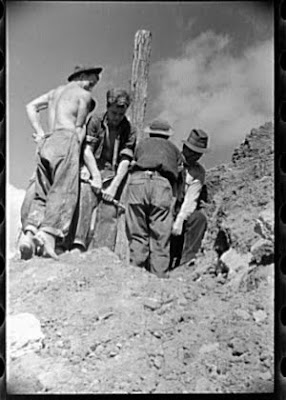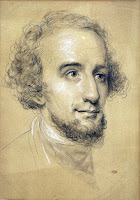
(Wikipedia) The Great Disappointment was a major event in the history of the Millerite movement, a 19th century American Christian sect that formed out of the Second Great Awakening. William Miller, a Baptist preacher, proposed based on his interpretations of the prophecies in the book of Daniel (Chapters 8 and 9, especially Dan. 8:14 "Unto two thousand and three hundred days; then shall the sanctuary be cleansed"), that Jesus Christ would return to the earth during the year 1844.
... Between 1831 and 1844, on the basis of his study of the Bible, and particularly the prophecy of Daniel 8:14—"Unto two thousand and three hundred days; then shall the sanctuary be cleansed,"—William Miller, a Baptist preacher, predicted and preached the imminent return of Jesus Christ to the earth. He first assumed that the cleansing of the sanctuary represented purification of the Earth by fire at Christ's Second Coming. Then, using an interpretive principle known as the "day-year principle", Miller, along with others, interpreted a prophetic day to read not as a 24-hour period, but rather as a calendar year. Further, Miller became convinced that the 2,300 day period started in 457 B.C. with the decree to rebuild Jerusalem by Artaxerxes I of Persia. Simple calculation then revealed that this period would end—and hence Christ’s return occur—in 1843.
Despite the urging of his supporters, Miller never personally announced an exact date for the expected Second Advent. However, in response to their urgings he did narrow the time-period to sometime in the Jewish year 5604, stating: “My principles in brief, are, that Jesus Christ will come again to this earth, cleanse, purify, and take possession of the same, with all the saints, sometime between March 21, 1843 and March 21, 1844.”
Continued
Photo: A playful caricature of a Millerite, an adherent of the Adventist preacher William Miller who predicted that the world would end on April 23, 1844. The man sits in a large safe labeled "Patent Fire Proof Chest," stocked with a ham, a fan (hanging on the door of the safe), cheese, brandy, cigars, ice, a hat, and a small book marked "Miller." As he thumbs his nose, he says "Now let it come! I'm ready." The "salamander safe," probably a trade name of the period, is named after the animal mythically reputed to have the ability to endure fire (and, presumably, the holocaust) without harm. (Library of Congress)




































